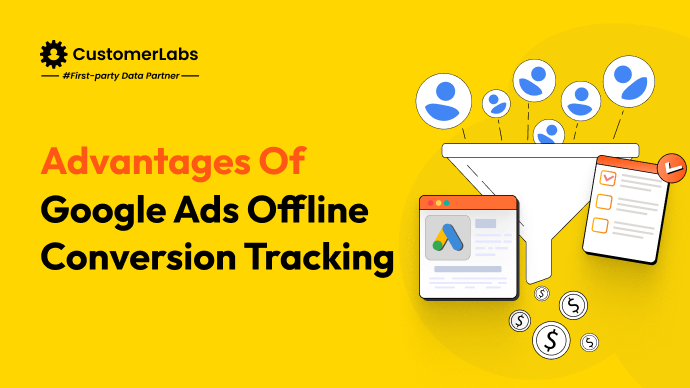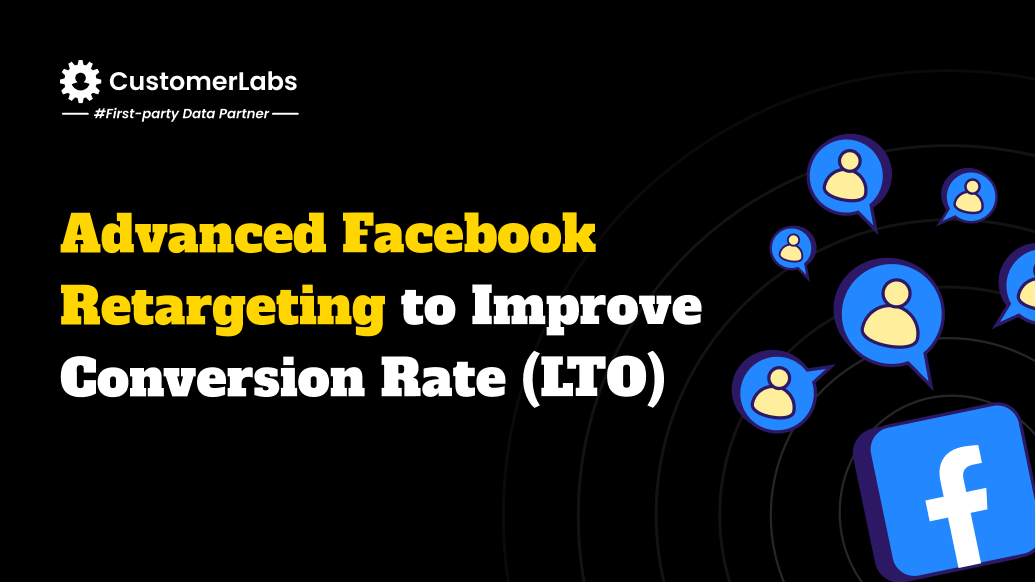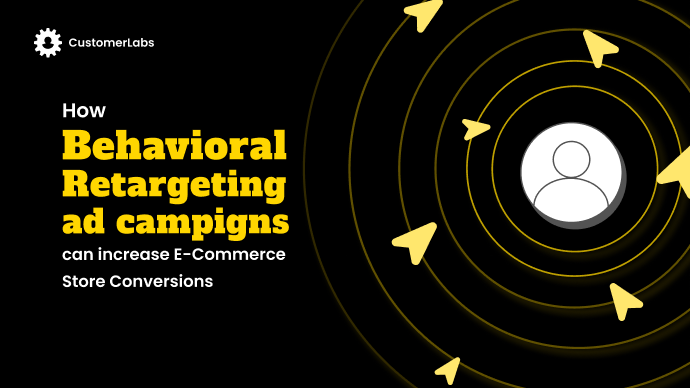Your ads are driving traffic, but traffic alone isn’t enough. What you need is meaningful action—purchases, sign-ups, or leads—and that’s where your customer conversion rate becomes critical. The gap between visits and conversions reveals what’s working and what’s leaking revenue from your funnel. Minor adjustments to landing pages, CTAs, or checkout flows can make a significant impact on performance.
If your message lacks consistency across ads and landing pages, or your mobile experience falls short, you’ll see conversions slip through the cracks. Knowing how to calculate and track your customer conversion rate is just the beginning. Optimization is where real growth lies. In this guide, you’ll find actionable strategies and tools to sharpen your conversion efforts, helping you turn visitors into loyal customers.
What is Customer Conversion Rate?
The customer conversion rate is a key metric that measures the number of users who converted—by completing a specific action, such as making a purchase or signing up—expressed as a percentage of the total number of users who visited your site. The higher your conversion rate, the more effective your content and strategies are at driving desired actions.
Customer conversion rate tracks both macro conversions (like completed purchases or sign-ups) and micro conversions (such as product views or clicks on CTAs). While macro conversions represent your major wins, micro conversions offer insight into user intent and highlight potential drop-off points in the funnel.
Conversion rate benchmarks can vary significantly based on industry norms, device preferences, and regional trends. Optimizing for mobile is especially critical, given the growing shift to mobile commerce; poor mobile UX or slow load times can directly impact conversion performance.
Conversion Rate Optimization (CRO)
Conversion Rate Optimization (CRO) is the process of improving your website to encourage more visitors to complete specific actions, like clicking on the demo button or subscribing newsletters. CRO involves analyzing user behavior to identify friction points—like confusing CTAs or complicated checkouts—and refining these areas to make the journey smoother.
But it goes beyond…
To improve Customer Conversion Rate, you must also check and improve the consistency between the ad creative and the landing page.
Along with that, you must also ensure if you are reaching the right audience with the right message. This also has an impact on your conversion rate if you are calculating the conversion rate using every person who saw your ad. To tackle this, power your ad campaigns with first-party data.
Seasonal events, such as Black Friday or holiday sales, are ideal times to apply CRO strategies, helping you prepare for high traffic and maximize conversions with well-tested offers, optimized banners, and a streamlined purchase process.
In the next section, we’ll learn how to calculate conversion rates using practical formulas, ensuring every step of your funnel is measurable and optimized.
Formula for Calculating Customer Conversion Rate
Calculating customer conversion rate can be tricky, especially if you are measuring your funnel performance, which requires tracking multiple specific visitor actions. For instance, when measuring the conversion rates of a sales campaign, high click-through rates do not signify conversion. You should rather rely on the number of sales or purchases made to decide on the conversions.
With that being said, here’s the basic customer conversion rate formula:
Total number of visitors who performed a desired action/Total number of site visitors x 100.
Let’s break it down into more specific metrics to provide deeper insights:
- Sales Conversion Rate: (Total Sales / Total Visitors) * 100 reveals how effectively traffic converts into revenue. For example, if 1,000 visitors result in 50 purchases, the sales conversion rate is (50 / 1,000) * 100 = 5%.
- Lead Conversion Rate: (Leads Captured / Total Visitors) * 100 helps evaluate the effectiveness of lead-generation efforts. If 200 leads emerge from 1,500 visitors, the lead conversion rate is (200 / 1,500) * 100 = 13.3%.
Applying these formulas strategically would help you determine the rate of conversion along with deeper insights on your marketing efforts.
Next, let’s explore the tools and techniques you can use to monitor and improve these metrics effectively.
Tools and Techniques for Tracking Conversion Rate
Using the right tools is critical to optimize your customer conversion rate by tracking visitor behavior and refining your marketing efforts. Here are some essential tools and methods to implement:
- Google Analytics—Bounce Rates: Identify pages where users exit immediately, signaling the need for better content alignment or UX improvements.
- Traffic Sources: Track where visitors are coming from—organic, paid, or social—to allocate ad spend effectively.
- Exit Pages: Find the last pages users see before leaving to address funnel drop-offs.
- Heatmaps: Visualize user behavior to understand how visitors engage with key elements like CTAs.
- Session Recordings: Analyze user session recordings to spot UX issues and optimize navigation.
- Google Tag Manager: Manage tracking pixels and conversion events efficiently without modifying website code.
Next, we’ll explore strategies to enhance conversion rates by aligning design, messaging, and user intent.
Strategies to Improve Your Sales Conversion Rates
Optimizing your conversion rate involves refining multiple touchpoints across the customer journey. From ensuring that your landing pages resonate with user intent to gather real-time feedback, each strategy plays a critical role in driving results.
- Optimize Landing Pages
Ensure your landing pages align perfectly with the messaging in your ads. Inconsistent messaging confuses visitors, reducing the chances of conversion. Keep CTAs prominent, use persuasive copy, and ensure fast loading times to minimize drop-offs.
- Message Consistency Between Ads and Pages
Ad-to-page consistency reinforces trust. For instance, if an ad promises a discount, the landing page must prominently display that offer. Inconsistent experiences lead to high bounce rates, especially in competitive markets.
- Smart Segmentation
To optimize conversion rates, you need to segment your 1P audience data effectively for tailoring content and offers based on distinct user behaviors. To gather and manage your first-party data seamlessly, consider using a Customer Data Platform (CDP) like CustomerLabs. This helps you not only collect your user data on the server-side (1p domain tracking using 1p cookies) but also offers 360-degree unification, audience segmentation and activation.
- Use Heatmaps and A/B Testing on Pages
Monitor user behavior through heatmaps to understand how visitors interact with key page elements. Pair this with A/B testing to refine button placements, images, or headlines for maximum engagement.
- Analyze Checkout Abandonment Metrics
Identify friction points within the checkout process—like complex forms or shipping surprises—that cause users to abandon carts. Optimize these steps to boost conversions. If you feel you have optimized this, you can retarget all those previous cart abandoners using 1P data Ops platform and increase your conversion rates!
- Mobile Optimization
A growing number of users shop via mobile. Ensure your site is mobile-responsive, with easy navigation and quick load times. Poor mobile experiences can significantly hurt your conversion rates.
- Personalized Recommendations
Offering personalized product recommendations based on user behavior can increase engagement and conversions, as users are more likely to convert when presented with relevant options. To offer personalization across ad platforms or your website, 1p data (first-party data) is your key!
- Incentivize with Urgency and Scarcity Tactics
Creating a sense of urgency, such as showing low stock or limited-time offers, can drive users to act faster, increasing conversion likelihood. These strategies on ads will drive more purchases (conversions), boosting your overall conversion rate.
If PPC Ads are not converting for your eCommerce store, checkout the issues and how to solve them – read here.
Conclusion
Optimizing your customer conversion rate is an ongoing process that demands precise tracking, A/B testing, and constant adjustments across touchpoints. Whether it’s refining CTAs, aligning ad messaging with landing pages, or streamlining the checkout flow, even small tweaks can have a significant impact on driving more conversions and improving ROI. Staying proactive in monitoring and improving these metrics ensures you capture every opportunity to turn visitors into paying customers.
To elevate these efforts further, integrating CustomerLabs CDP can make a powerful difference. It helps you consolidate first-party data, allowing you to create personalized customer journeys that align with your marketing goals. By sending enriched data directly to your ad platforms like Google and Facebook, you can unlock higher-performing remarketing campaigns, lower CPP, and drive incremental revenue.
Discover how CustomerLabs makes conversion rate optimization smarter and more effective at scale. Book a demo.






